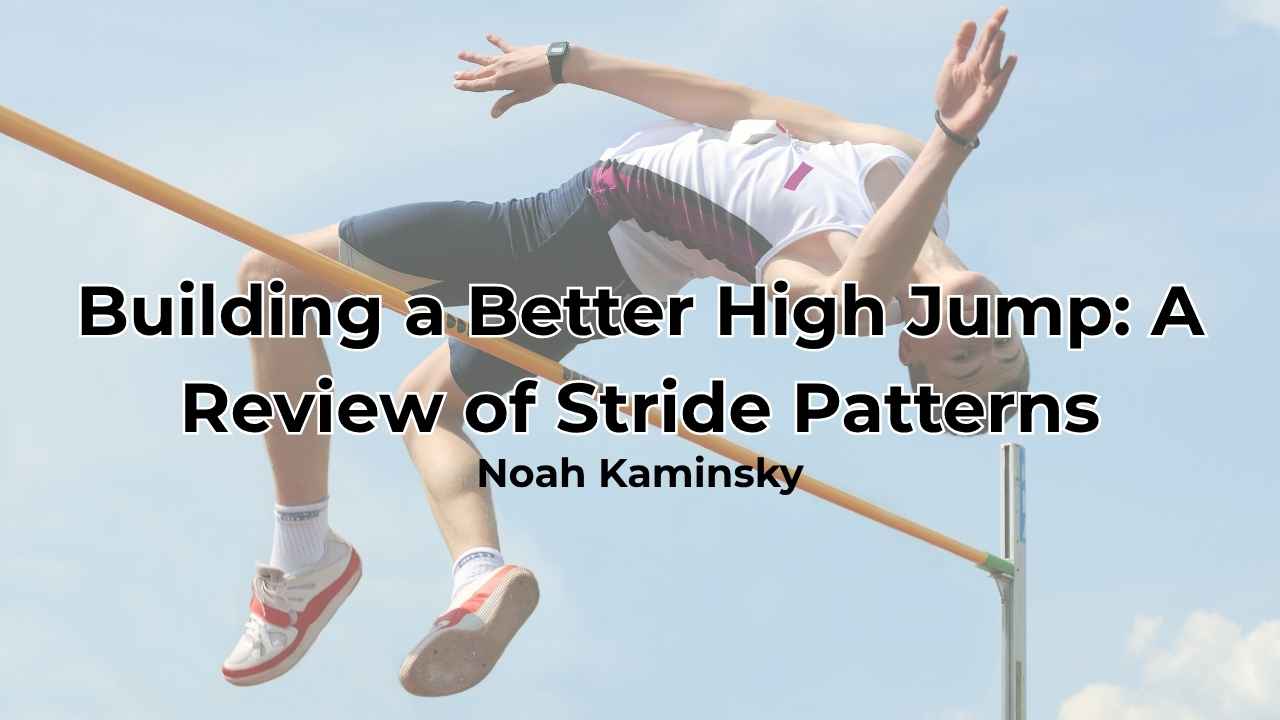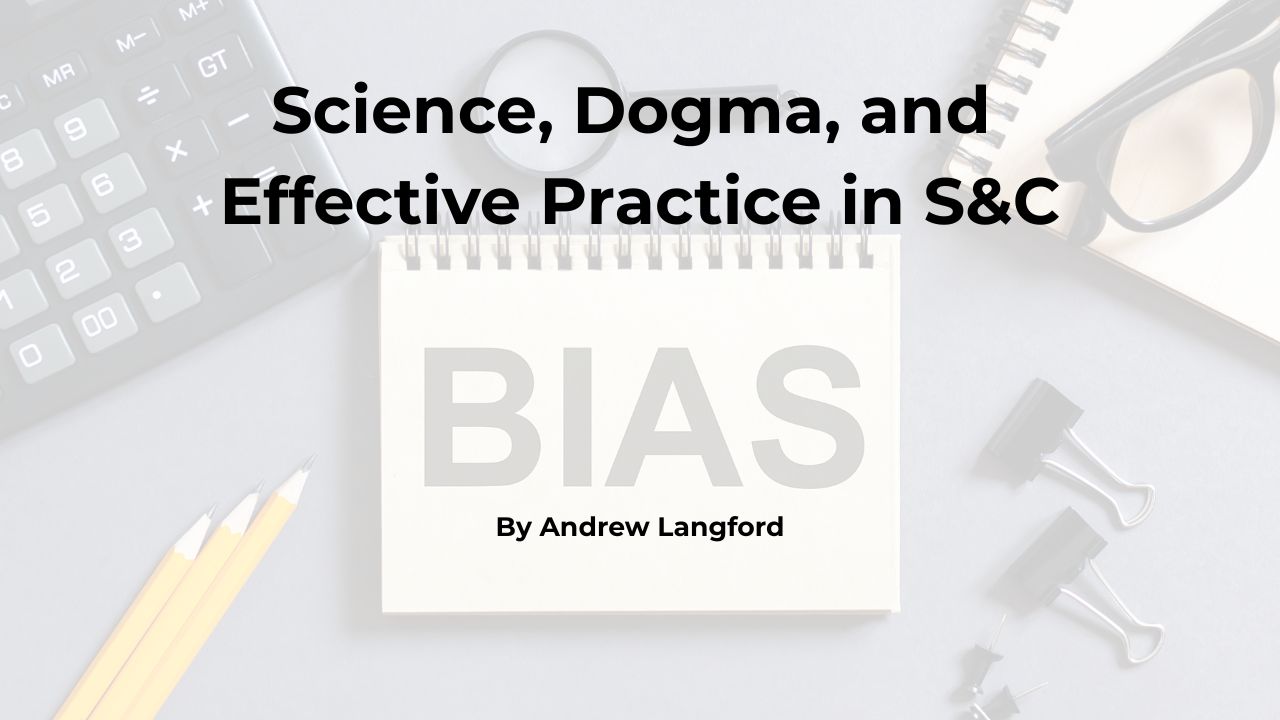[mashshare]
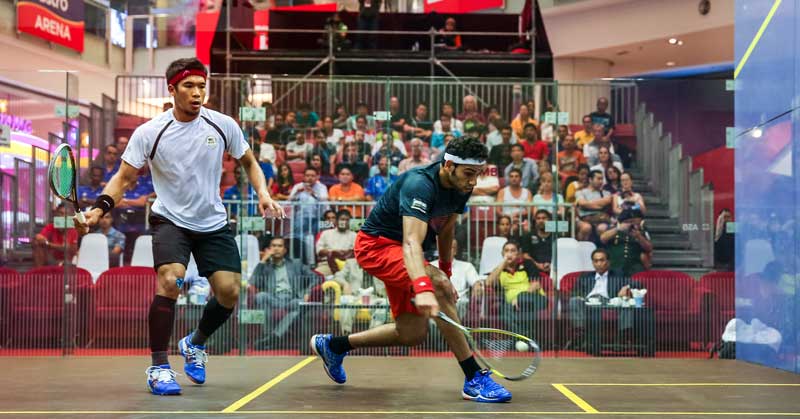
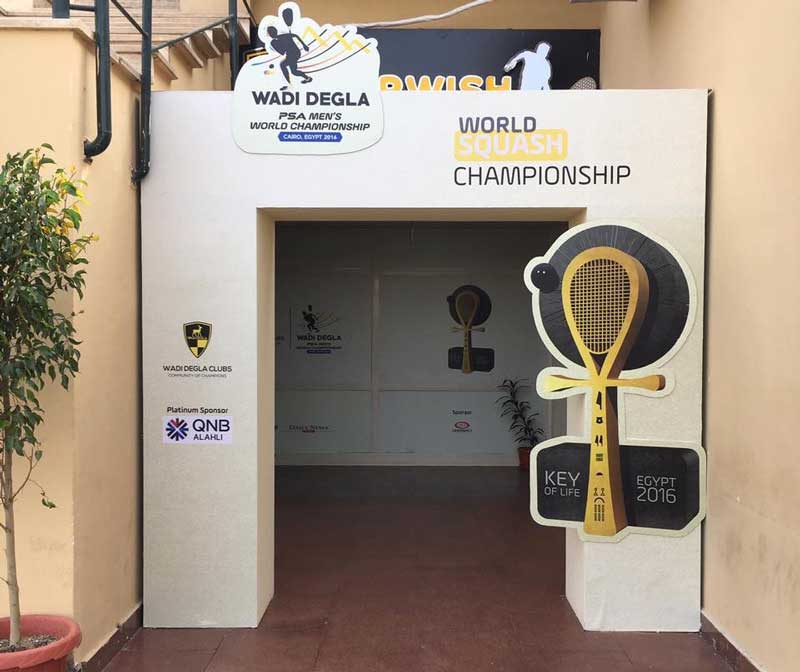
Squash is an exceptionally tough sport where the top players exhibit phenomenal levels of athleticism, speed, power, and agility. I was fortunate to attend the 2016 Men’s Squash World Championships in Cairo, Egypt with players from the Hong Kong Sports Institute. As a strength and conditioning coach, I work with the number one ranked player at the Institute.
The head coach sent me to Egypt to experience the sport’s highest level to gain greater insight and knowledge by observing how the best players behave, prepare, and compete.
Video 1. Mathieu Castagnet dives for the ball and quickly recovers to hit a winning shot. Squash requires remarkable skills and physical abilities.
The sport has produced outstanding, talented athletes over the years including Jansher Khan, Peter Nicol, Nicol David, and the current number one in the world Mohamed El Shorbagy. Squash courts can be set up in spectacular locations for great sporting occasions—in front of the Pyramids of Giza, inside Grand Central station, and overlooking the Bund in Shanghai.

Squash is a Skill Game that Requires a High Fitness Level
At its core, squash is ultimately a skill game. If you don’t have technical and tactical skills, it doesn’t matter how fit you are. You can’t compete at the higher echelons of the game. This isn’t a groundbreaking concept and isn’t unique to squash. My job is to enhance the athletic capabilities of the athletes while the specialist sports coach teaches the intricacies of the sport.
A skilled player should never lose to an opponent because they lack physical fitness. Share on XWhen watching elite squash players such as “Colombian Cannonball” Miguel Angel Rodriguez you understand just how important physical fitness is to the players. As I said, there comes the point when physical fitness won’t make up for a shortfall in squash skill. On the other side of the coin, a player should never lose to an opponent because they lack physical fitness.
Video 2. Rodriguez enhances his squash skills with excellent physical fitness, reinforcing how crucial strength and conditioning is to squash players.
Fitness, speed, and unbelievable reactions allowed Rodriguez to reach number four in the world, and he still resides in the top ten. Squash skill, technique, and tactics remain our training priorities. But having watched Rodriguez bounce around the court almost as fast as the squash ball reinforced how essential strength and conditioning is in modern squash.
Appropriate Training for Squash Players
It was with great surprise then that I saw some players following incredibly flawed training practices. At the hotel gym, I watched an imposing looking athlete come in for a training session in full power lifter mode. Knee sleeves, belt, weightlifting shoes. He went straight to the smith machine (granted hotel gyms are usually appallingly equipped), racked up 50kg, and grunted and groaned his way through some squats. These were working sets. On another occasion, I saw a young, up and coming potential star hitting some lunges after he exited the tournament. High rep sets of lunges with the 6kg dumbbells.
In squash training, players complete dozens if not hundreds of lunges during a week. The value of performing more high rep lunges under low load is a questionable practice to me and may only invite injury through overuse. We use lunges and single leg exercises in our players’ programs, but we tend to load them heavy to build max strength and related qualities.
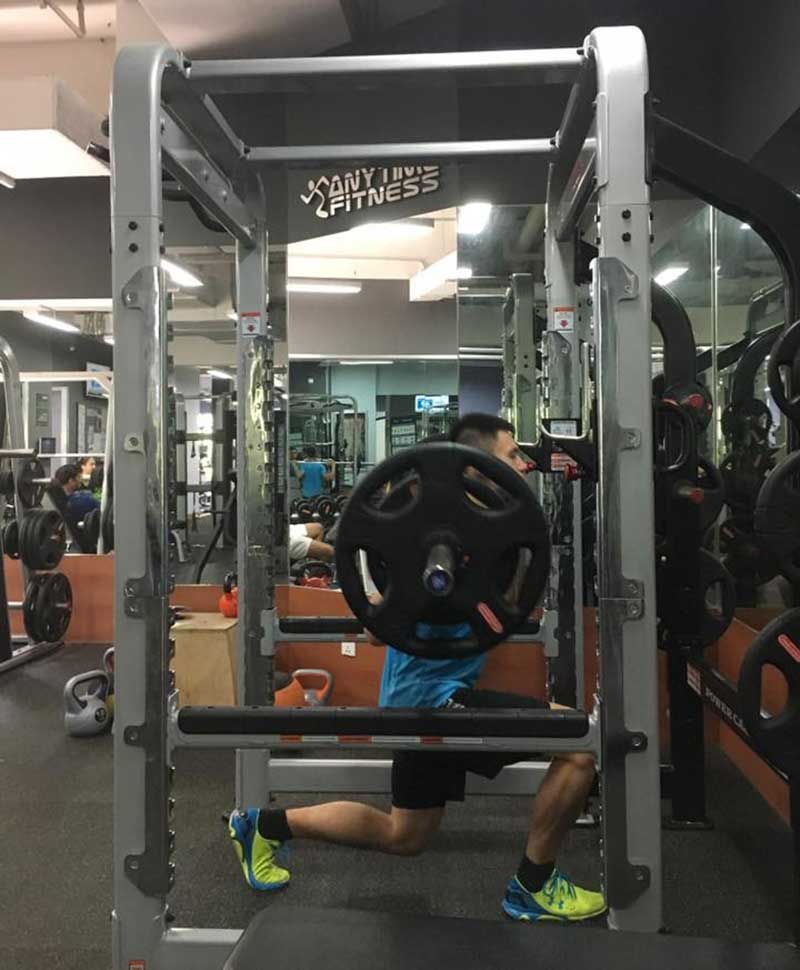
I also had the opportunity to talk to a player who used only old school bodybuilder methods and machine weights and had no real experience with free weights. We shared ideas with him, demonstrated some things, and I’m sure this will benefit his future squash training and performance.
Current knowledge & training concepts aren’t moving down to all levels of the sport of squash. Share on XIn the world of elite sports performance, we know American Football and Rugby use sports science, strength and conditioning, and modern training practices. My time in Egypt highlighted that squash is still one of many sports where the latest knowledge and training concepts are not finding their way down through all levels of the sport. The benefits of weight training and muscular strength to footballers and rugby players is clear but can still be a hard sell in other sports.
Learning Good Habits to Enhance Performance
I observed many positive things, too, while watching the stars of the game. The preparation, warm-up, and cool-down strategies of players Nick Matthew (former three-time World Champion from England) and Nicol David (the long-serving former female world number one) highlighted that longevity in elite sport is achieved only by consistent and long-term good habits.
On game day, I saw both Matthew and David in the gym going through morning stretching, mobility, and activation routines to ensure they were optimally prepared for evening competition. I suspect it’s this dedication, professionalism, and attention to detail that took them to the very peak of the sport and kept them there for so many years.
Speaking of Matthew, I was fortunate to share a bus ride with him from the hotel to the competition venue and pick his brain about squash, training, and his life in sport. We had interesting conversations about working for the EIS, British Cycling, and Shane Sutton. The most interesting story was his personal account of how his attitudes about training have changed.
Like other athletes I’ve met in squash and several other sports, Matthew has an exceptional attitude toward training. His work rate and commitment to athletic development are exemplary. So much so that he was perhaps guilty of over training at times during his career. Matthew openly admitted that he would stress out if he couldn’t train hard in the lead up to, and the day before, a competition. Between game days, he always wanted to be on the court sharpening his skills (at some tournaments, the players get days off between matches).
Unfortunately he was struck down with a knee injury going into the Commonwealth Games which prevented him from training as he normally would before the competition. Even during the week of competition, he didn’t train normally due to his knee injury and travel logistics. Matthew went on to win the Gold medal, and he realized training wasn’t everything. As Dan Pfaff would say, “training is overrated.” It took Matthew until his early 30’s and a knee injury to learn this fact.
Experienced senior athletes, especially, don’t need to train hard every day before and between competitions. Playing squash almost daily every week for many years, athletes won’t lose their touch because they don’t play the day before, or the day in between, matches.
Preparing for Major Competitions
When it comes to a major competition, athletes do all the hard work during the months and years before the competition. Once players arrive at the competition venue, they’re not going to develop new athletic abilities or greatly enhance their competition performance. Training at this late stage will likely mess up all the months and years of hard work. The analogy of “polishing the car” during the final weeks or days before the major championships is the best approach to optimize performance. You won’t add any horsepower at this late stage; you’ll only put miles on the clock that might lead to the breakdown of a vital part.
The flip side is that preparation is very individual. Athletes have their crutches. Things they need to feel, do, or experience to believe they’re fully prepared for optimal performance. The coach’s job is to mentally prepare athletes to perform their best rather than prepare them physically.
On match day, some athletes want to have a session with their coach, some want to hit by themselves. Some like to talk tactics with the coach and some like to have their space, to avoid distractions and other people, to be alone with their music and headphones. I witnessed the challenge Hong Kong coach Faheem Khan faced managing his players’ individual personalities and preferences at the World Championships.
A coach must be adaptable and empathetic to work with the different characters and needs among their athletes. Although we understand that athletes don’t need to put in any work this close to the competition, if the athlete is accustomed to and wants to put in sweat and effort on the court, we need to work with their preferences and idiosyncrasies.
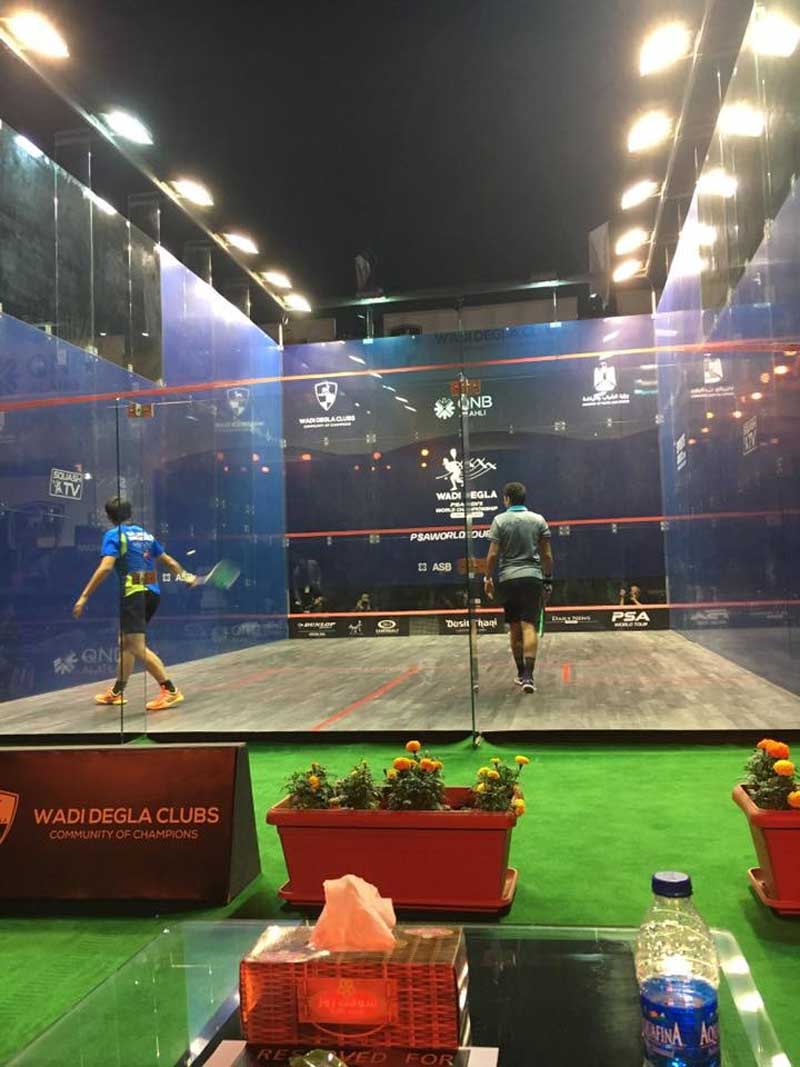
The World Championships went quite well for our guys. While I only work with one of them, I was the strength and conditioning professional from the Institute on this trip, and I helped look after all our guys in the competition. Two players in the main draw progressed to the last 16 and one more to the round of 32. They all lost to a former World Champion, the then reigning World Champion, or the player who went on to become World Champion. They gave a good account of themselves.
As to the importance of professionalism, preparation, and good habits, I was pleased to see the evidence of our athletes’ education and their dedication to their development. Even after tough losses and match finishes late in the night, it was pleasing to see our athletes leading themselves through their cool-down and recovery protocols.
The squash season is long, busy, and unforgiving. The World Championships may have ended for our guys, but the next World Series event was to begin only a couple of weeks later—the next level of competition below the World Championships that’s somewhat equivalent to the Diamond League.
Plans A, B, C, and D
When the tournament was over for our players, we still had the odd day at the end of the week in Cairo. As ever, when training away from home, you never have access to the equipment and facilities you’re used to or need. Everyone wants to undertake the most effective form of training but, for a myriad of reasons, it’s not always possible.
Coaches must be flexible, adaptable, and creative. In a hotel gym with only a handful of machines and dumbbells or a competition venue with minimal equipment and facilities for recovery and cool down, you have to make do with what is there. You have a plan A, but you also put together a plan B, C, and D if you can.
Whenever I travel with athletes, I scout out the venue, the hotel, and the local area looking for opportunities. At the China Open, the hotel facilities were appalling with unsuitable treadmills and only a bench. By exploring the local area and discussions with a local gym owner, I was able to secure access to facilities nearby.

I saw these quotes on social media recently, and they couldn’t be more appropriate to this idea:
- “Having a plan is important—having a plan B maybe even more so!” – Dustin Imdieke, ALTIS
- “Plan B isn’t making it up on the spot—it’s called “plan” B—so let’s plan for it!” – Stuart McMillan, ALTIS
Take Away Points
- Squash requires exceptional levels of athleticism. In a skill based sport, physical fitness won’t take you to the top, but it’s criminal to fall short of your technical and tactical potential because your physical abilities are underdeveloped.
- Squash, like many sports, has a long way to go regarding education (throughout all levels of the game) about how optimal athletic development should look.
- “Don’t try to replicate the game in training, distort it” – Vern Gambetta
- Professionalism, dedication, and doing the little things well are vital to sporting success and the longevity of that success.
- Nick Matthew’s experience supports Dan Pfaff’s assertion that “training is overrated.” Some athletes take a long time or a key incident to learn the essential or basic messages. Young athletes should listen to, and benefit from, the experiences and mistakes of their predecessors.
- The analogy of “polish the car” is apt for major championships. You can’t make an athlete’s tournament with training at this late stage, but you can break it.
- Work with the individual and their personality. During a championship, the competition’s psychological component dominates, and you must give the athlete what they need to feel strong and confident going into the competition.
- Education pays off when athletes are given messages repeatedly and experience the benefits of these lessons. Every interaction with an athlete is an opportunity to educate.
- Have a plan. But be flexible and adaptable. Have backup plans. Once on site, scouting and exploration can help inform, strengthen, and enhance any backup plans.
Since you’re here…
…we have a small favor to ask. More people are reading SimpliFaster than ever, and each week we bring you compelling content from coaches, sport scientists, and physiotherapists who are devoted to building better athletes. Please take a moment to share the articles on social media, engage the authors with questions and comments below, and link to articles when appropriate if you have a blog or participate on forums of related topics. — SF
[mashshare]

